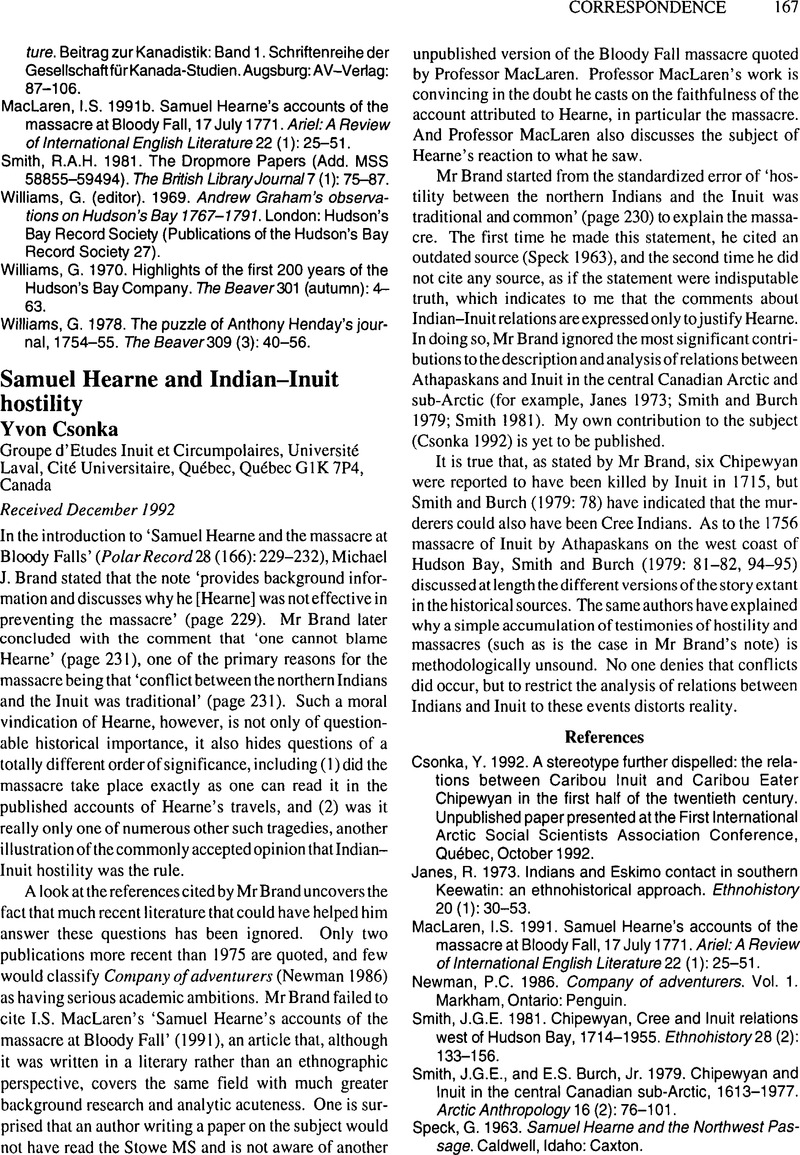No CrossRef data available.
Article contents
Samuel Hearne and Indian–Inuit hostility
Published online by Cambridge University Press: 27 October 2009
Abstract
An abstract is not available for this content so a preview has been provided. As you have access to this content, a full PDF is available via the ‘Save PDF’ action button.

- Type
- Correspondence
- Information
- Copyright
- Copyright © Cambridge University Press 1993
References
Csonka, Y. 1992. A stereotype further dispelled: the relations between Caribou Inuit and Caribou Eater Chipewyan in the first half of the twentieth century. Unpublished paper presented at the First International Arctic Social Scientists Association Conference, Quebec, October 1992.Google Scholar
Janes, R. 1973. Indians and Eskimo contact in southern Keewatin: an ethnohistorical approach. Ethnohistory 20(1): 30–53.CrossRefGoogle Scholar
MacLaren, I.S. 1991. Samuel Hearne's accounts of the massacre at Bloody Fall, 17 July 1771. Ariel: A Review of International English Literature 22 (1): 25–51.Google Scholar
Smith, J.G.E. 1981. Chipewyan, Cree and Inuit relations west of Hudson Bay, 1714–1955. Ethnohistory 28 (2): 133–156.CrossRefGoogle Scholar
Smith, J.G.E., and Burch, E.S. Jr, 1979. Chipewyan and Inuit in the central Canadian sub-Arctic, 1613–1977. Arctic Anthropology 16 (2): 76–101.Google Scholar


